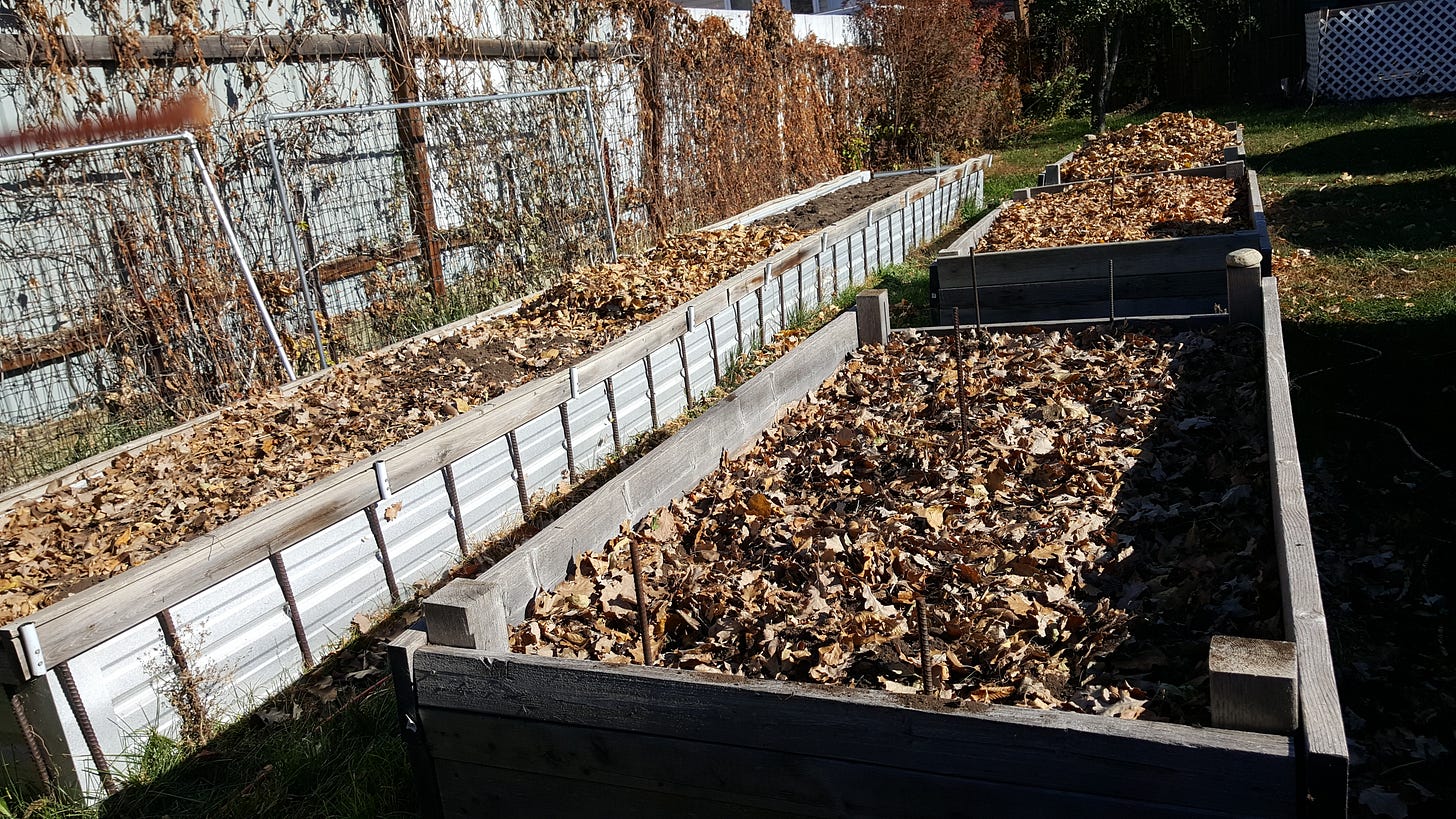Is the application of leaves to your garden soil in fall, sufficient for growing healthy plants the following year? That is the question I asked myself, when the price of organic fertilizers at local sources skyrocketed.
The good news is that regular application of leaves to your garden may be sufficient for healthy plant growth in subsequent years. The University of Florida found that “good yields of such crops as cucumbers, tomato and greens can be expected after 2 to 3 years of applications of at least 20 tons [of oak leaves] per acre annually.” That’s a little under 1 pound per square foot per year. The Nitrogen content of leaves may be as high as 1.62% which is close to what many retail products claim.
Tomato growers take note. The Calcium levels can be as high as 3%. Tomatoes need Calcium as part of their metabolism, and a shortage may contribute to a condition referred to as blossom end rot.
Rutgers University did a study a number of years ago analyzing the nutrient content of leaves. They gathered leaves from various municipalities across New Jersey, and measured the nutrient concentration.
Nutrient
Avg. Concentration (%) Range (%)
Carbon 47 36-52
Nitrogen 1 0.66-1.62
Potassium (K2O) 0.38 0.09-0.88
Phosphorous (P2O5) 0.38 0.02-0.29
Calcium 1.64 0.13-3.04
Magnesium 0.24 0.02-0.46
Sulfur 0.11 0.01-0.21
Additional trace nutrients and minerals were identified and measured as follows:
Avg. parts per million Range (ppm)
Boron 38 7-72
Iron 1461 46-9800
Manganese 550 19-1845
Zinc 81 22-392
Sodium 110 36-325
Chlorine 1264 68-3995
Copper 8.1 2.8-31.5
Cobalt 2.7 0.9-10.9
Nickel 5.3 1.1-57.9
October 23, 2024 - collecting leaves and incorporating into garden soil


